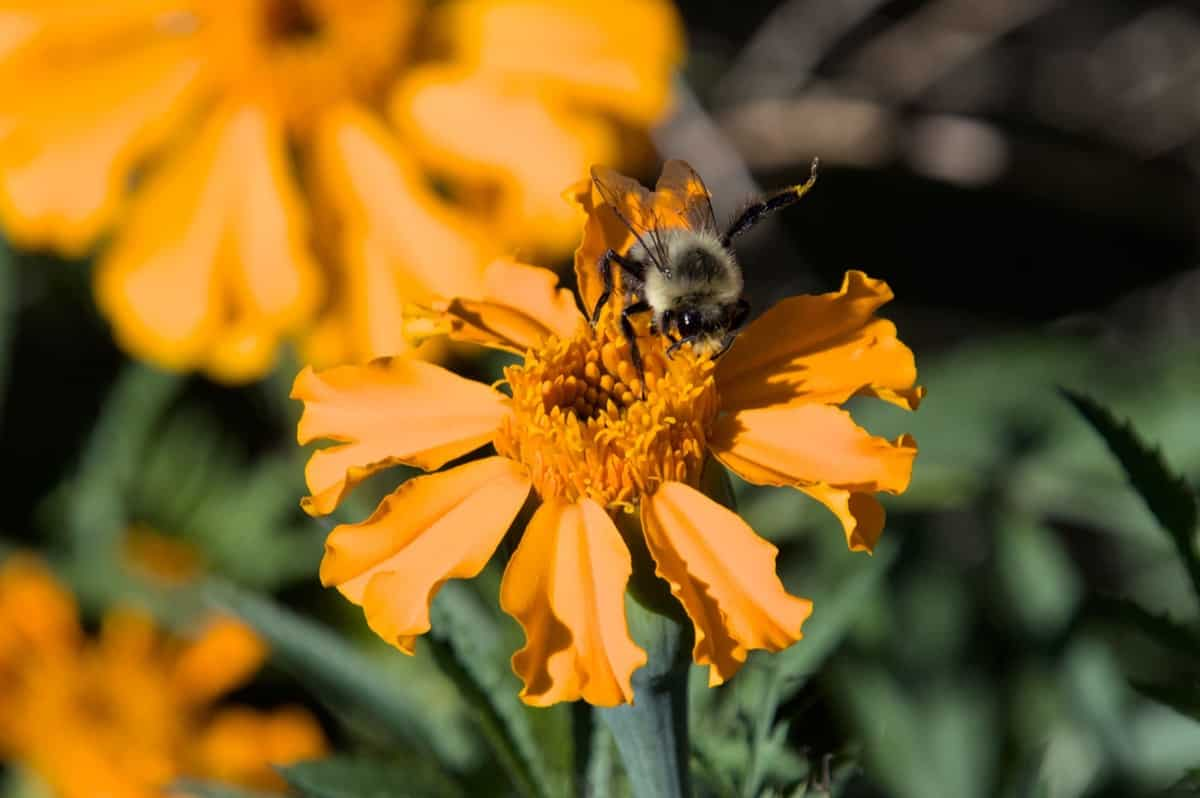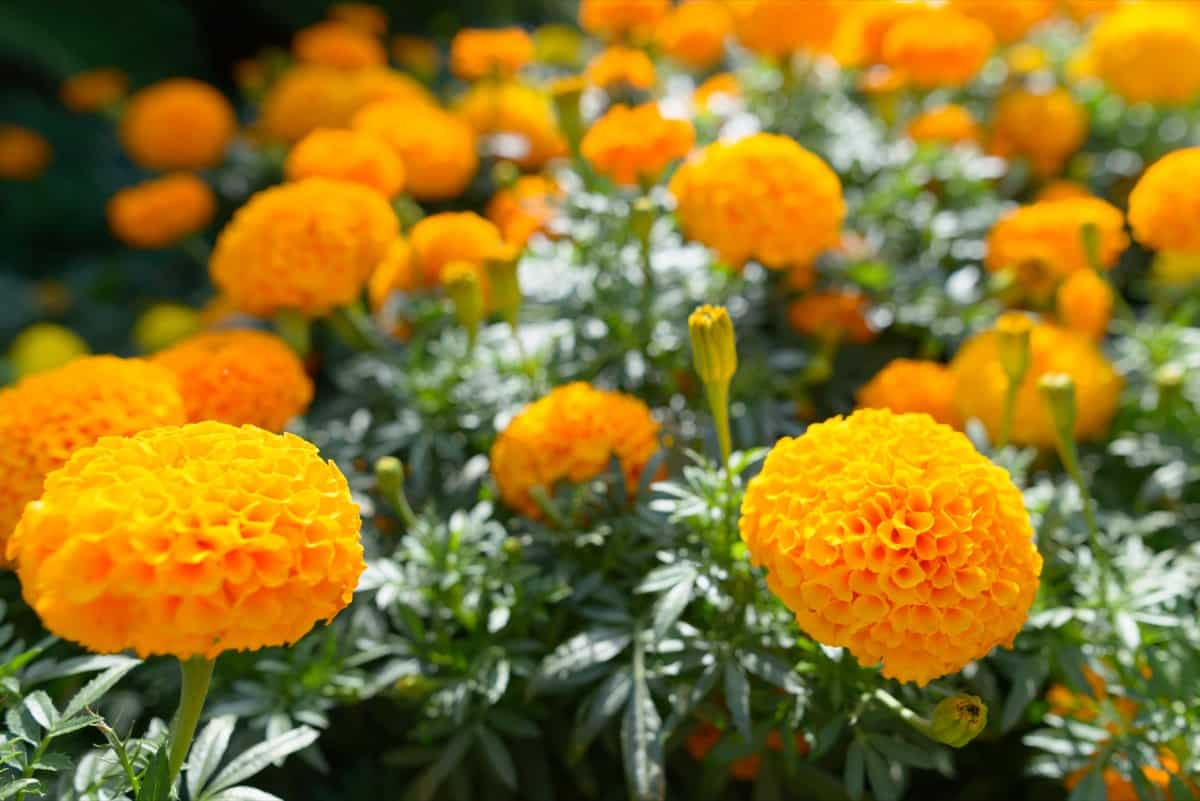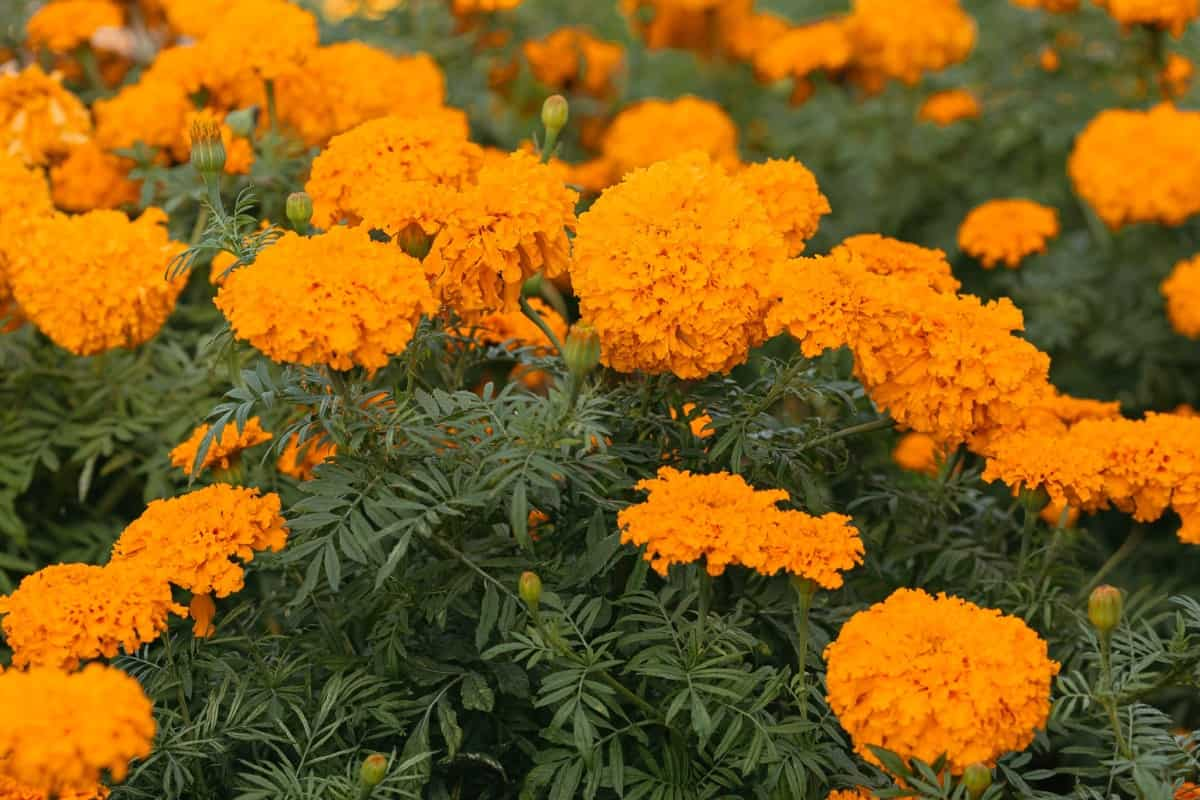Pollinating Marigold flowers is crucial in ensuring a bountiful harvest and vibrant blooms. Whether you hand pollinate or rely on natural methods, the key is understanding the pollination process and implementing best practices. By using appropriate tools and techniques, and being mindful of common mistakes to avoid, you can increase the yield of your Marigold flowers.

Methods for Hand Pollinating Marigold Flowers
Hand pollinating Marigolds is a useful technique to ensure successful cross-pollination and maximize the yield of Marigold flowers. The process involves manually transferring pollen from one flower’s stamen to another’s stigma. Identify mature flowers that are ready for pollination. Look for open blooms with vibrant petals and visible stamens covered in yellow or orange pollen. Next, gently remove the petals from a selected flower to expose the central reproductive structures – the stamens and pistils.
Step-By-Step Guide on How to Pollinate Marigold Flowers
First, find a mature Marigold flower with open petals. This is crucial because only mature flowers are ready for pollination. Once you’ve found the perfect candidate, gently remove its petals to expose the flower’s reproductive parts. Next, locate the stamen – the male part of the flower – which contains pollen. Using a small brush or cotton swab, you can carefully collect some pollen from one flower and transfer it to another flower’s stigma – the female part.
Be gentle during this process, as Marigolds have delicate structures. The goal is to transfer pollen from one flower’s stamen to another’s stigma without causing any damage. Repeat this process for each flower in your garden that requires pollination. Taking your time and being patient will ensure successful results. Remember that timing is everything when it comes to pollinating Marigolds. It’s best to do it early in the morning when temperatures are cooler and humidity levels are higher. This creates an optimal environment for successful pollination.
Natural Ways to Pollinate Marigold Flowers
Marigolds are beautiful and vibrant flowers that can add color to any garden. What type of pollination occurs in the Marigold flower? While bees or other insects typically pollinate them, there are also natural ways you can help facilitate the process. One method is simply planting Marigolds close to each other. This naturally increases the chances of cross-pollination as insects move from flower to flower.
Another way is gently shaking the plant’s stems, which helps release pollen and encourages pollinators like bees to visit. Attract beneficial insects by creating a diverse and bee-friendly garden environment. Planting native flowers alongside your Marigolds will provide additional food sources and increase the likelihood of them visiting your Marigold plants.
In case you missed it: 10 Common Problems With Marigold Flowers: How to Fix, Treatment, and Solutions

Best Practices for Pollinating Marigold Flowers
Certain practices can greatly increase your chances of success when pollinating Marigold flowers. Marigold flowers are most receptive to pollination during the early morning hours when the temperature is cooler, and humidity levels are higher. Take advantage of this window of opportunity by hand pollinating or encouraging natural pollinators to visit during these optimal conditions.
Select Marigold plants that are strong and vibrant, with plenty of blooms. Healthy plants are more likely to produce viable pollen and attract beneficial insects. When hand pollinating Marigolds, be careful not to damage the flower’s delicate petals or reproductive structures. To ensure accurate pollination, avoid transferring pollen between different varieties or species of Marigolds unless intentional hybridization is desired.
Create an inviting environment for bees, butterflies, and insects by planting various nectar-rich flowers nearby. These natural pollinators will help increase the chances of successful fertilization in your Marigold patch. Give each Marigold plant enough space for adequate air circulation and sunlight penetration. Crowded plants can hinder insect movement and limit access to effective cross-pollination.
Tools and Techniques for Pollinating Marigold Flowers
When pollinating Marigold flowers, having the right tools and techniques can make all the difference. Paintbrush or Q-tip are effective tools that allow you to transfer pollen from one flower to another without damaging the delicate petals. Tweezers or forceps help remove the male stamen from one flower and transfer it to the female stigma of another. Like a paintbrush or Q-tip, cotton swabs can gently collect pollen and transfer it between flowers. Keeping your Marigold plants hydrated is crucial during their blooming period, as this helps with pollen production.
Tips for Successful Pollination of Marigold Flowers
Timing is crucial when it comes to pollinating Marigold flowers. Wait until the flower has fully opened and the stamen (the male part) is producing pollen. When hand-pollinating Marigolds, make sure to handle the flowers with care. Use a small paintbrush to transfer pollen from the stamen to each flower’s stigma (the female part). To prevent unwanted cross-pollination, avoid using the same brush or swab on different varieties of Marigolds.
In case you missed it: How to Start Marigolds in Pots: Best Practices for Growing From Seeds and Transplants

This will help maintain their unique characteristics and ensure purebred seeds. High temperatures and strong winds can affect pollination success rates. Choose a calm day with moderate temperatures for your pollination efforts if possible. While hand pollination can be effective, don’t underestimate the power of natural pollinators such as bees and butterflies.
Planting companion flowers for Marigold, like Lavender or Cosmos nearby, can attract these helpful insects. Marigolds thrive in nutrient-rich soil, so make sure they have access to proper fertilization throughout their growth cycle. Well-fed plants are more likely to produce healthy flowers that attract pollinators.
How to Increase the Yield of Marigold Flowers Through Pollination
Marigold flowers are not just beautiful additions to any garden, but they also have a wide range of practical uses. Whether you want to enjoy their vibrant colors or harvest them for medicinal purposes, increasing the yield of Marigold flowers through pollination is essential. Is Marigold self-pollinated or cross-pollinated? The Marigold flowers were pollinated by the cross-pollination method. This is an effective technique to boost your Marigold flower yield.
This involves transferring pollen from one plant to another, which can result in stronger and more abundant blooms. To do this, start by identifying plants with different varieties or species of Marigolds nearby – these will be your potential pollinators. Another way to increase the yield is by attracting natural pollinators such as bees, butterflies, and other insects. Create an inviting environment for these creatures by planting flowers that they love alongside your Marigolds.
Bees are particularly helpful in pollinating Marigolds since they carry large amounts of pollen from one flower to another. Proper care and maintenance play a significant role in maximizing yields as well. Ensure that your Marigold plants receive adequate sunlight and water regularly but avoid overwatering, which may lead to root rot, and fertilize appropriately using a balanced fertilizer specifically formulated for flowering plants.
Common Mistakes to Avoid When Pollinating Marigold Flowers
When pollinating Marigold flowers, gardeners should avoid a few common mistakes. These mistakes can hinder the successful pollination process in Marigold and ultimately impact the yield of your Marigold plants. One mistake is not knowing when to pollinate. Timing is crucial when it comes to hand-pollinating Marigolds.
It’s important to wait until the flower has fully opened and its stamens (the male reproductive parts) are ready for pollen transfer. Another mistake is using dirty or contaminated tools for pollination. Ensure your hands, brushes, or cotton swabs are clean before touching the flowers. Any contaminants can interfere with natural fertilization. Additionally, many gardeners overlook the importance of variety selection in achieving successful pollination.
In case you missed it: 7 Causes of Dying Marigolds and How to Fix Them?

Marigold varieties may have different flowering times or structures that affect their compatibility for cross-pollination. One big mistake is neglecting proper spacing between Marigold plants. Crowded plants can lead to poor air circulation and an increased risk of disease or pest infestation, negatively impacting pollination.
Conclusion
Successfully pollinating Marigold flowers is essential for creating a thriving garden of vibrant blooms. Whether you employ hand pollination techniques or rely on natural methods, understanding the process and taking the necessary steps will greatly increase your chances of achieving successful pollination.
- Feed Your Flock for Less: Top 10 Tips to Save on Chicken Feed
- Ultimate Guide to Ossabaw Island Hog: Breeding, Raising, Diet, and Care
- Hatching Answers: The Top 10 Reasons Your Chickens Aren’t Laying Eggs
- Eggs and Economics: Breaking Down the Cost of Raising Backyard Chickens
- Defend Your Greens: Proven Methods to Keep Iguanas Out of Your Garden
- Ultimate Guide to Cinnamon Queen Chicken: A Comprehensive Guide for Beginners
- Ultimate Guide to California Tan Chicken: Breeding, Raising, Diet, Egg-Production and Care
- Ultimate Guide to Marsh Daisy Chicken: Breeding, Raising, Diet, and Care
- 10 Types of Chicken Farming Businesses You Can Start for Profits